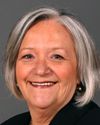Thank you for coming.
I continue to believe that the potential for this technology is enormous as long as it is applied in a way that respects four key conditions. One is the blurring of faces and licence plates. Second is the protection of sensitive locations, like clinics and women's shelters. Third is that there is adequate public notification before the pictures are taken. And fourth is that the storage of the images does not violate our commercial privacy laws with respect to keeping information about people for which those people have not given consent.
I'm going to start with the first issue, which is blurring, and I'm going to share with you a story a constituent offered me. He told me this story the same day I witnessed the Google street camera driving through a neighbouring community called Riverside South, which is a suburban community here in Ottawa, in my riding. He said, and I quote:
I'm selling my father's old home, my father's and my mother's old house, and I have got the front rooms completely stripped and the curtains off the windows, but no one can see. None of my neighbours can see into my house at that level, and I didn't think someone would see me. Anyway, this morning I got up and had a shower, and I walked out of my washroom naked. And just as I looked over, the Google cam was coming by our second floor like a snorkel peeking into the second floor of my house.
He went on to say, “I don't know if it can actually see through windows, I'm sure it can, but I'm on Google naked now for my street. This is bad.”
This fellow has given me authorization to share his name. His name is Robert White, and the residence in question was 835 Stansted Road.
What assurances can you give Mr. White that he will not become an international sex symbol?




